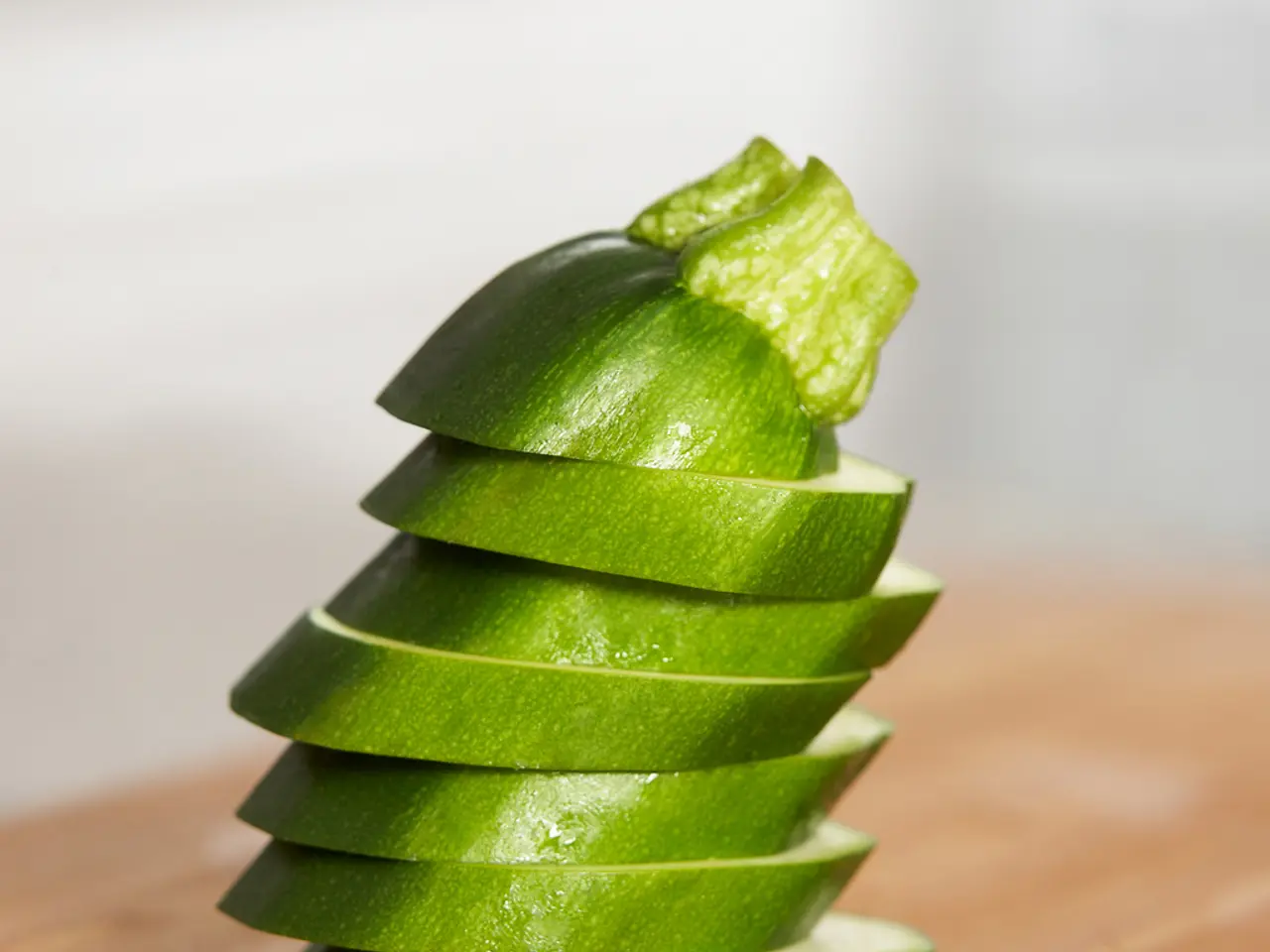Nurturing bountiful cucumber crops during their productive period: tips on proper feeding
Boosting Cucumber Growth with Potassium Monophosphate
Cucumber plants thrive with the right balance of essential nutrients, and Potassium Monophosphate (KH₂PO₄) is one such fertilizer that can help. This water-soluble fertilizer provides beneficial amounts of potassium and phosphorus, crucial for cucumber growth, fruit development, and stress resistance.
Recommended Use for Cucumber Plants
Dosage: - For root watering (soil drenching), use a solution concentration of about 0.2 to 0.5 g/L (200 to 500 mg/L) of potassium monophosphate. Apply around 200 to 500 mL per plant depending on the plant size and growth stage. - For foliar spraying, prepare a more diluted solution, typically 0.1 to 0.3 g/L (100 to 300 mg/L) potassium monophosphate to avoid leaf burn. Spray evenly on leaves until runoff but avoid over-saturating.
Timing and Frequency: - Apply at early morning or late afternoon/early evening to prevent rapid drying and reduce the risk of leaf burn caused by sunlight interacting with fertilizer droplets. - Foliar sprays can be repeated every 7 to 14 days during active growth and fruit setting. - Root applications are best done when soil moisture is adequate but not waterlogged, ideally during early growth phases and again at fruit formation.
Precautions: - Avoid applying concentrated solutions during the hottest part of the day, as this increases phytotoxicity risk. - Do not exceed recommended dosages; excessive phosphorus or potassium can cause nutrient imbalances, reduce uptake of other nutrients, or cause salt injury to roots or foliage. - Use clean water for dilution and spray equipment to prevent clogging or uneven distribution.
By following these guidelines, you can optimize nutrient uptake while minimizing stress or damage from over-fertilization. Always consult the fertilizer’s label or supplier recommendations specific to potassium monophosphate formulations for exact product instructions.
In addition to Potassium Monophosphate, other methods can help address specific issues. For example, if cucumbers are nitrogen-deficient, a "green" fertilizer made from submerging stinging nettles and other weeds in water and leaving in the sun for 3-4 days can be used for root watering. Foliar application is best done in the morning or after 16:00 in dry, overcast weather.
Potassium Monophosphate can also help combat signs of potassium deficiency, such as deformed fruits or yellowing leaf edges. It is advisable to use Potassium Monophosphate in the evening to prevent burns.
Remember, a healthy cucumber plant is just a spray or watering away!
Maintaining a home-and-garden lifestyle, incorporating gardening into your routine, can include boosting cucumber growth with Potassium Monophosphate. This fertilizer, when used properly, provides necessary potassium and phosphorus for the healthy growth, fruit development, and stress resistance of cucumber plants.




